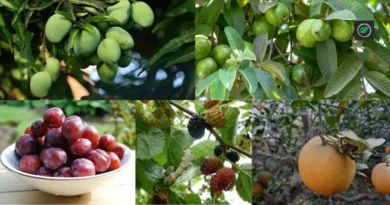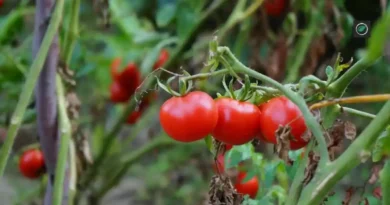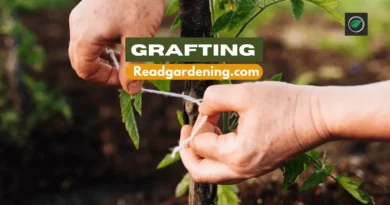How To Harvest Broccoli Seeds? Step-by-Step Guide-2025
Harvesting Happiness: A Simple Tutorial on How to Harvest Broccoli Seeds?
Gardeners across the globe cherish the precious moment when they can collect seeds from their hard work. These seeds carry the hope and promise of bountiful harvests yet to come. Broccoli, a nutritious and versatile vegetable, is no different. But did you know you can save your own broccoli seeds? This guide will walk you through how to harvest broccoli seeds?
Table of Contents
Introduction
How to harvest broccoli seeds? is a practice as old as agriculture itself but remains a mystery to many garden enthusiasts. Why buy seeds when you can cultivate your own for next season’s crop? It’s sustainable, economical, and deeply satisfying.
When getting broccoli seeds it is crucial to understand the lifecycle of your broccoli plant. It starts with the broccoli producing yellow or white flowers, eventually turning into seed pods. These mature and dry pods are your treasure trove of seeds for the next planting season.
In this guide, we’ll break down each step of the seed-harvesting process so you, too, can become a part of this self-sufficient gardening tradition.
Does Broccoli Have Seeds?
Absolutely, broccoli does indeed have seeds! Many people may not realize this because they harvest and consume broccoli before it reaches the seed-producing stage. The process of broccoli-producing seeds is quite fascinating.
Step 1: Understanding Broccoli Anatomy
Before you start harvesting, it’s essential to understand broccoli anatomy. Broccoli belongs to the Brassica family and is closely related to other vegetables such as cauliflower, cabbage, and Brussels sprouts. The part of broccoli that we consume is called the “head” or “crown,” which consists of tightly packed flower buds.
The flowers develop into seed pods, which can vary in size and color depending on the variety of broccoli. Some seed pods are small and green, while others are larger and brown. The key is to allow the seed pod to fully mature before harvesting.
Step 2: How to Harvest Broccoli Seeds?
Letting Your Broccoli Flower
Firstly, allow your broccoli plants to flower. This might seem counterintuitive, especially if you’re used to harvesting the heads for consumption. However, the flowers are necessary as they will eventually turn into the seed pods.
Waiting for Seed Pods
After the flowers have bloomed and pollinated, seed pods will start to form. These will initially be green and tender, but as they mature, they’ll turn a tan or brown color and harden. This is when you know they’re ready to be harvested.
Harvest the Seed Pods
To harvest the seed pods, simply cut them off the plant. You can remove individual pods as they mature or wait until most of them are ready and remove them all at once.
Dry the Seed Pods
After harvesting, it’s essential to let your seed pods dry out completely. This can take up to two weeks. Ensure they’re in a well-ventilated area and turn them regularly to allow for even drying.
Extract the Seeds
Once your seed pods are thoroughly dry, you can extract the seeds. Break open the pods and remove the seeds inside. It can be a bit fiddly, so take your time.
Tips for Collecting and Cleaning the Seeds
- Thrash the Seed Pods:
Gently crush the pods to release the seeds. Ensure that the seeds are not damaged in the process.
2. Winnowing:
Separate the seeds from the chaff. You can do this by gently blowing away the lighter chaff.
Step 3: Storing Broccoli Seeds
To ensure your seeds are viable for the next growing season, proper storage is essential. Here’s how to keep them safe and ready:
- Airtight Containers:
Store your seeds in a cool, dry place, preferably in labeled airtight containers or envelopes.
- Avoid Moisture:
Any moisture can ruin the seeds, so including a desiccant like silica gel can help absorb any residual moisture.
Step 4: Growing Broccoli Plants from Seed
With your seeds at the ready, here’s how you can turn them into thriving broccoli plants:
- Seed Germination:
Start your seeds indoors, planting them in a seedling mix and keeping them moist until they sprout.
- Transplanting:
Once the seedlings are strong enough and the weather is right, transplant them to your garden, taking care not to disrupt the roots.
Understanding the lifecycle and waiting for the right time to plant will maximize your chance of a successful crop.
Conclusion
Harvesting your own broccoli seeds is a rewarding pursuit that offers numerous benefits. Not only does it make you part of a lineage of growers who have sustained this practice for generations, but it also allows you to be more self-reliant and economically efficient in your gardening.
By understanding and respecting the lifecycle of the broccoli plant, you can ensure the collection of high-quality seeds for future seasons. Embarking on this journey unlocks a new level of connection with your garden and the food you cultivate. So, why not give it a try? The satisfaction of seeing a crop you’ve cultivated from seed to harvest is truly unparalleled.
FAQs
Can you save seeds from broccoli?
Yes, you can definitely save seeds from broccoli. The process involves allowing your broccoli to flower and form seed pods, which you can then harvest, dry, and extract the seeds from.
How do you preserve seeds?
Ensure that the seeds are cleaned and dried thoroughly. Furthermore, ensure they are stored in a cool and dry location. Lastly, don’t forget to label the seeds and use the oldest ones first. By following these steps, you can ensure the longevity and viability of your stored seeds.
How do you know when broccoli seeds are ready?
Broccoli seeds are ready when the seed pods turned a tan or brown color. The seed pods will also feel hard to the touch. It’s essential to wait until this stage before harvesting to ensure that the seeds are viable for future planting seasons.
How long does broccoli take to grow from seed?
From seed to harvest, broccoli takes approximately 12-16 weeks. However, this can vary depending on the variety of broccoli and growing conditions.
Do seeds go bad if not planted?
Yes, seeds can go bad if not planted within a certain timeframe. The viability of seeds decreases over time, and factors such as moisture and storage conditions can also affect their lifespan. It’s recommended to use or plant stored seeds within 1-2 years for optimal germination rates.



